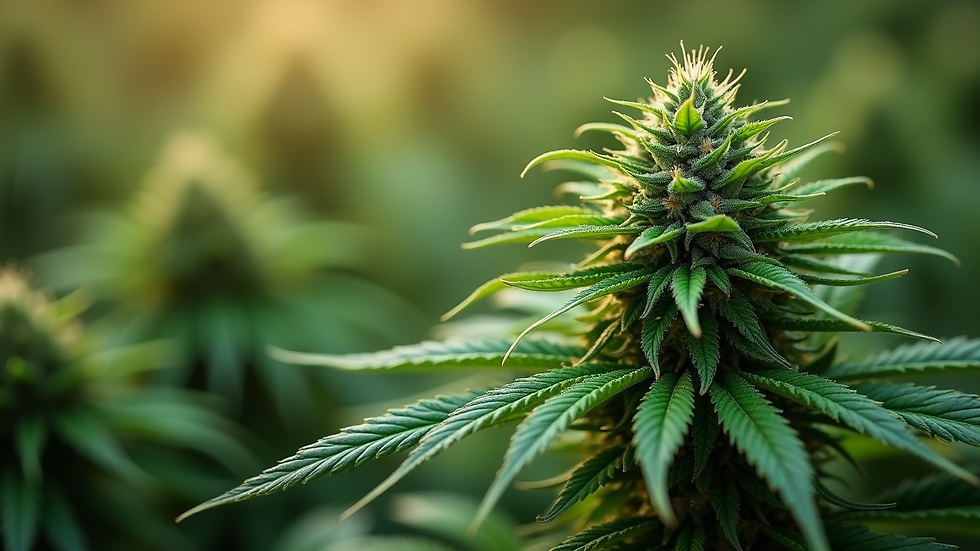Top Indian Cannabis Strains: Idukki Gold, Parvati & Malana Cream | Caliva
- saltarchgamearchra
- Aug 2
- 4 min read
Updated: Aug 4
Cannabis is an essential part of India's cultural landscape, woven into the spiritual, social, and medicinal practices of various communities. One of the most fascinating aspects of cannabis in India is the diversity of landrace strains—indigenous varieties that have developed unique characteristics over generations. This post highlights some of India’s legendary cannabis strains, focusing on their historical context, cultural relevance, and legal status across different regions.
The Indian cannabis landscape is a rich tapestry of strains, each representing the country’s agricultural traditions and cultural significance. Understanding this diversity not only illuminates the unique strains found across India but also emphasizes the need to preserve these varieties, which are vital to the country’s heritage.

THC Content and Historical Context
Idukki Gold stands out as one of the most celebrated cannabis strains from Kerala, with a THC content typically ranging from 20% to 24%. This potent strain is cultivated primarily in the Idukki district, where optimal soil and climate conditions contribute to its unique flavor profile. Historically, Idukki Gold has been cultivated for centuries, often linked with local customs and festivals. For instance, during the Onam festival, it may have played a role in traditional celebrations among local communities.
Cultural Relevance
In Kerala, Idukki Gold is more than just a recreational indulgence; it is deeply woven into the local culture. Traditionally used in rituals and ceremonies, it symbolizes hospitality and local pride. For example, during local festivals, Idukki Gold may be offered as a gesture of goodwill. Furthermore, its role in Ayurvedic medicine adds to its significance, as it is believed to help alleviate certain ailments, reflecting a combination of wellness and tradition.
Legal Status
Navigating the legal landscape regarding cannabis in Kerala is complex. While industrial hemp cultivation is allowed, aimed at promoting products like ropes and textiles, the recreational use of cannabis remains illegal. This poses a significant challenge for farmers of Idukki Gold, who aim to preserve their traditional cultivation methods amidst legal restrictions.
Malana Cream: The Charas of Himachal Pradesh

THC Content and Historical Context
Malana Cream, hailing from Malana village in Himachal Pradesh, is revered for its production of charas (hashish). It has a THC content ranging from 15% to 20%, boasting a rich, aromatic profile and high resin production. The villagers have cultivated this strain for generations, crafting its unique characteristics through careful traditional practices. Remarkably, charas production can yield up to 120 grams of resin per plant, a testament to its popularity.
Cultural Relevance
Malana Cream holds profound spiritual and cultural importance for the local community. Cannabis is regarded as a sacred plant, often used in divine rituals and celebrations. The village's governance system adds another layer to its cultural identity. For example, the villagers have developed social norms that prioritize communal decision-making, illustrating a culture that remains largely distinct from mainstream society. This connection emphasizes that Malana Cream is not simply a product but a symbol of local heritage.
Legal Status
While the cultivation of cannabis is illegal in Himachal Pradesh, regions like Malana continue to maintain their traditional practices. Despite legal restrictions, Malana Cream remains a coveted product among cannabis enthusiasts, leading to ongoing discussions about the need for legal reform to protect indigenous cultivation practices.
Parvati Strain: The Flavor of the Valley
THC Content and Historical Context
The Parvati strain originates from the picturesque Parvati Valley in Himachal Pradesh. It features a balanced THC content ranging from 12% to 18%, appealing to those seeking a gentler experience. Cultivated under favorable conditions, this strain benefits from high altitudes and nutrient-rich soil. Local farmers prioritize sustainable practices, aligning with traditional methods to produce high-quality cannabis.
Cultural Relevance
The Parvati strain is closely intertwined with local cultural practices, commonly associated with social gatherings and celebrations. For example, during the annual Parvati Mela, this strain often plays a role in enhancing the festive atmosphere. Cultivating and enjoying Parvati cannabis reflects the identity and resilience of the local communities, contributing to the region's lively cultural narrative.
Legal Status
Parvati strain faces similar legal hurdles as Malana Cream, with national laws prohibiting cannabis cultivation. However, many villagers engage in subsistence farming for local use, making enforcement challenging in remote areas. Discussions surrounding the legalization of cannabis for cultural and medicinal purposes continue to grow as societal views shift.
Understanding Cannabis Diversity in India
Exploring Idukki Gold, Malana Cream, and Parvati provides insight into the broader diversity of cannabis in India. Each strain has adapted to its environment, shaped by generations of cultivation techniques. As awareness increases about the benefits of these indigenous strains, conversations around their preservation and legal status become more pressing. According to a recent survey, over 60% of residents in cannabis-cultivating regions support legalizing its controlled use, highlighting a shift in public perception.
It is crucial to recognize the cultural heritage tied to these strains. They embody centuries of tradition and local knowledge, transcending mere consumption.
Closing Thoughts
The narrative of Indian cannabis strains like Idukki Gold, Malana Cream, and Parvati is deeply rooted in history and culture. As conversations about legalization progress, it is vital to think about preserving these landrace strains. They offer more than just psychoactive effects; they reflect India's rich agricultural heritage. Balancing traditional practices with evolving legal frameworks is a necessity, and it is a discussion that deserves attention.
FAQ
Is Idukki Gold from Kerala still found today?
Yes, Idukki Gold continues to be cultivated, although growers often do so in secret due to legal restrictions.
What makes Malana Cream unique among charas strains?
Malana Cream stands out for its rich aroma and high resin content, making it highly sought after for its potency and distinct flavor.
By recognizing the transformations in legal status, cultural importance, and cultivation practices, this post aims to provide a thoughtful view of Indian cannabis strains and their future.



Comments